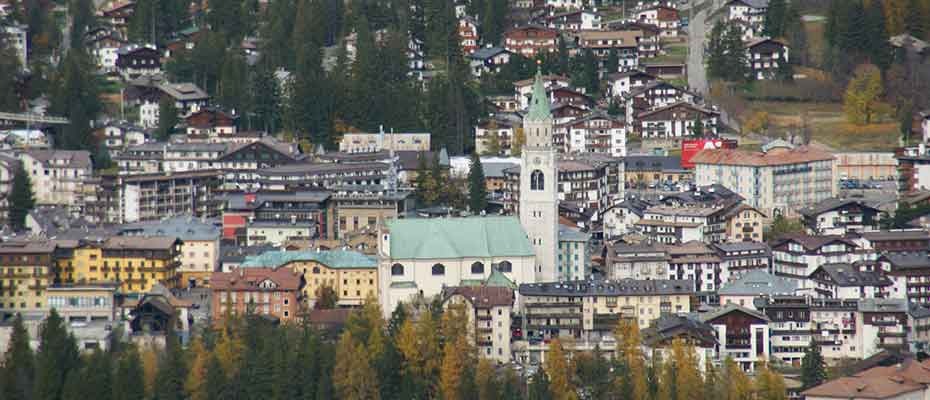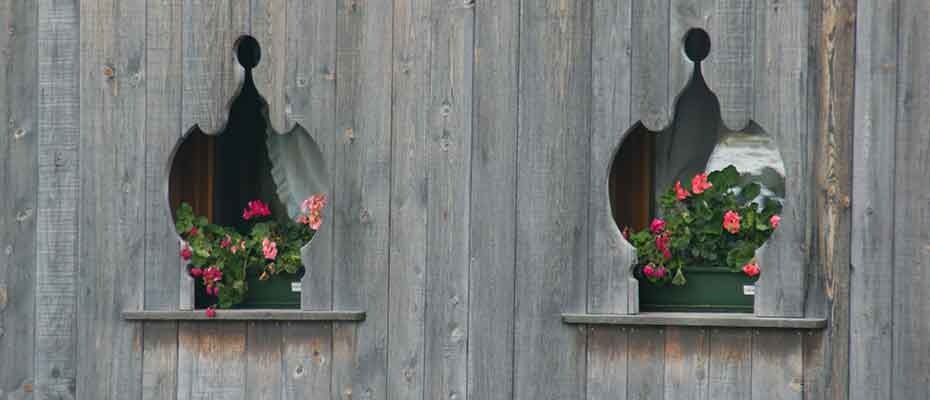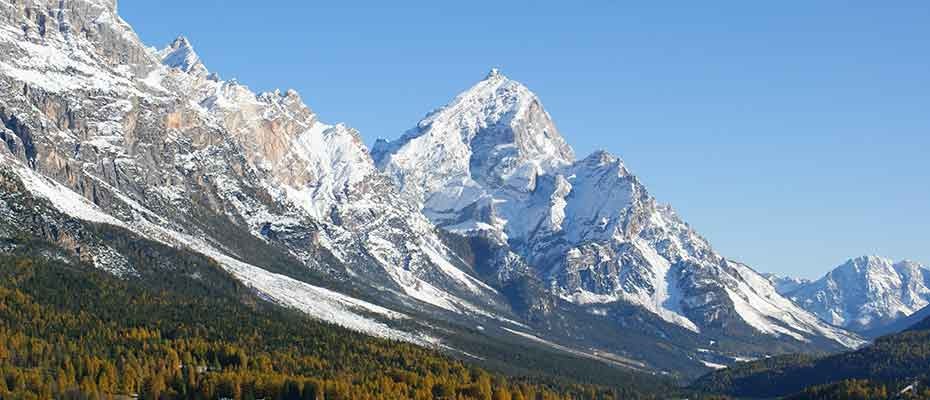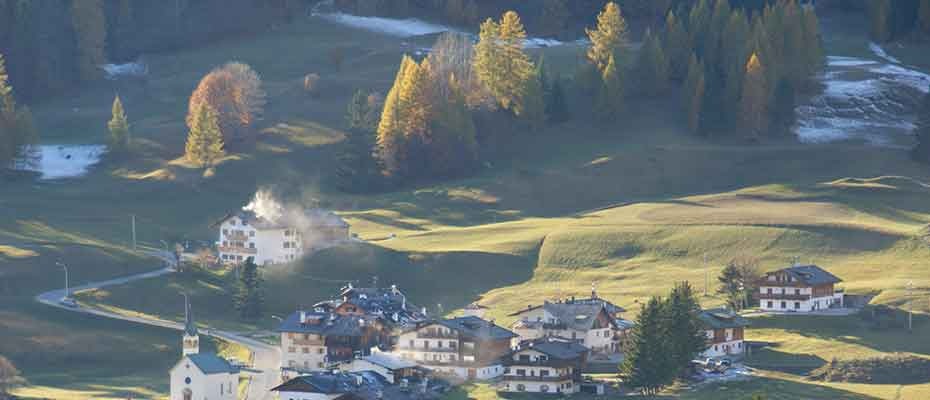Contact us for booking or for information
tel. +39 3279311671 - booking@dolomitiskirock.com
Contact usITS GEOLOGY #cortinadolomiti
250 million years ago the #Dolomites were a blend of seashells, corals and algae immersed in a tropical sea. They emerged 70 million years ago and shaped by time and weather they turned into today’s geological treasure.
As a matter of fact, in certain areas you can still see evidence of animal fossils embedded in the rocks. They are named after the French natural scientist Deodat de Dolomieu, the first to study the special kind of rock prevalent in this region, which he named “Dolomite”. It consists of a calcium and magnesium double carbonate MgCa(CO3)2, not the simple calcium carbonate (CaCO3) that we find in regular limestone.
This mineral gives the mountains a particularly light hue. It's the reason why the Dolomites are also called “Pale Mountains”. At sunrise, but especially at sunset, Dolomite takes on a color ranging from pinkish to fire red: this phenomenon is called Enrosadira. Its shade-shifts are caused by the varying positions of the sun during the year and by weather. In summer it is easily visible during morning and evening hours.
Since 2009 the Dolomite Mountains are protected by #UNESCO and by the Dolomiti d'Ampezzo Natural Park.

HISTORY
The history surrounding Cortina d'Ampezzo goes back to the legendary times of the struggles between the ancient Romans and the Barbarians. Originally a hamlet of shepherds, Cortina d'Ampezzo turned into a lumber town, exploiting its forests and the lumber business.
Due to its geographical location so close to the border, at first it became part of the Republic of Venice; later it was annexed to the Austro-Hungarian Empire for nearly 400 years. From the mid-1800s, thanks to the railroad that brought to the valley wealthy travelers from England, Germany and Russia, Cortina d’Ampezzo turned into the capital of the Dolomites, with luxury hotels and the first sport and tourist structures. From 1914 to 1918 World War I was the historical event that shocked this territory, so much so that many dolomitic locations surrounding the Ampezzo Valley still bear its tangible signs. After the defeat in 1918 of the Austro-Hungarian army, Cortina became part of the Kingdom of Italy. World War II was less traumatic and left no tangible trace; after the war, the Olympic Games came to Cortina and the tourist business exploded as we entered the modern era.
The Ampezzo Valley and Cortina have often been chosen by directors and screenwriters to shoot movies, due to the incomparable beauty and the uniqueness of the mountains. The most successful movies are: Cliffhanger by Renny Harlingen, with Sylvester Stallone (1993), The Pink Panther (1963), with David Niven and Peter Sellers; Ash Wednesday (1973), with Elizabeth Taylor and Henry Fonda; the famous installment of the James Bond saga, For Your Eyes Only (1981), with Roger Moore; Von Ryan Express(1965), with Frank Sinatra; The Bear (1988) by Jean-Jacques Annaud; Ladyhawke (1985), with Rutger Hauer and Michelle Pfeiffer; The Great Silence (1968), with Jean-Louis Trintignant.
The current population of Cortina d'Ampezzo is about 6000 people but it swells to 50000 in high season due to the influx of visitors. In spite of this, the Queen of the Dolomites has been keeping its rich heritage unblemished through time: the strict directives that regulate new construction expansion in compliance with the territory; the practice of wearing traditional colorful costumes and the habit to speak the pleasant local dialect attest to that.

WORLD WAR I, 1914 – 1918
The mountains of Cortina d'Ampezzo bear the marks of a sad part of World War I.
This historical event shocked the Ampezzo territory which was still under Hapsburg rule at the beginning of the conflict.
In addition to the monuments built as War Memorials, such as the one in Pocol, the mountains bear numerous pieces of evidence of the Austrian-Italian front: tunnels and trenches, forts and posts, roads and walkways are just a few examples of what you can bump into during an excursion through the Ampezzo Valley.
A few locations that saw the fighting between the two armies have been partly restored and turned into live testimonials of the Great War.
The restoration of war archeology about the armies of the countries that fought in these mountains from 1915 to 1918, lead to the completion of what is currently the largest open-air museum dedicated to the first world war.
In the area around Passo Falzarego between Lagazuoi and Cinque Torri, just steps away from the mountain cabins and the rock gym, you can reach by modern lifts or just a short walk awaya large selection of venues: the Lagazuoi war tunnels, the trenches and the open air posts at the Cinque Torri and the Open Air Museum at Sas de Stria; or you can visit the restored Tre Sassi Fort at Valparola, home of the Great War Museum.

THE 1956 OLYMPIC GAMES
Cortina d'Ampezzo owes its world fame also to the 1956 Winter Olympic Games, when they were broadcast live for the first time on Italian TV and for the first time in history the athletes’ oath was pledged by a woman.
Today you can visit the large Italia Ski Jump structure, the ice rink and the bobsled track dedicated to Eugenio Monti, the great athlete from Cortina.
THE NATURAL PARK IN THE AMPEZZO DOLOMITES
Established in March of 1990, the Natural Park in the Ampezzo Dolomites unfolds on 11200 hectares north of Cortina, on the border between the Veneto and the Sud-Tyrol regions, in the heart of the Eastern Dolomites.
The wildlife dwelling in the forests of these mountains includes roe deer, deer, chamois, and mountain goats; at present there are no known permanent bear settlements or wolf.
Other wildlife includes groundhogs, squirrels, foxes, badgers, hares, ermines, royal eagles, royal owls, grouses, black grouses, vultures and partridges.

HISTORY OF MOUNTAIN CLIMBING AND VIA FERRATAS
In 1943 An Austrian by the name of Paul Grohman, escorted by the Alpine Guides from Ampezzo was the first climber to reach the highest peaks in the Dolomites. Few Years later Angelo Dibona, an extraordinary climber defined by many a mountain climbing superstar, conquered the mountains with the most difficult and vertical faces. He explored Swiss, Austrian, French, and British mountains as well. Cortina’s central square is dedicated to him and his bust is set under the church steeple.
Another local climber worth remembering is Lino Lacedelli, who conquered the K2 with Achille Compagnoni in 1954.
Via Ferratas are well known and very popular. These routes that climb along rocky faces have various levels of difficulty: easy, medium, and challenging. These routes are equipped with a metal rope bolted to the rock by special pitons. This enables the person who wants to climb the face to hook up to the metal rope by a harness, with slings and carabiners worn on the body, to protect from a possible fall.
In the Cortina area there are 30 via ferratas, easy to handle and safe.
Most via ferratas were born from the restoration of historical World War I routes. The first ferrata in Cortina was created at the end of the 1800s, and is called “Scala del Minighèl”
Contact us for booking or for information
tel. +39 3279311671 - booking@dolomitiskirock.com
Contact us